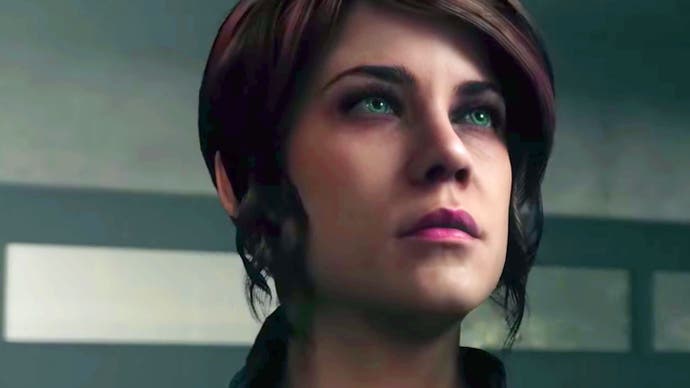Does Control's September update really improve performance?
Yes it does - but there's still work to do.
Remedy Entertainment's Control is a seriously impressive game and a stunning technological achievement with just one major Achilles Heel - immensely variable console performance, to the point where day one code could drop to a minimum of 10 frames per second in trouble spots on PlayStation 4. The September update released on PS4 consoles a couple of days ago, promising "improved general frame-rate performance through optimisation made to multiple systems and content" - and the good news is that the game is significantly better and we are one step towards a much more consistent console experience.
Let's be clear here though - we're still nowhere near a locked 30 frames per second, especially on the base PlayStation 4, the console that has the most problems in smoothly rendering the game. However, just as Remedy says, the general level of performance via Patch 1.03 is higher than it was and when the frame-rate does drop hard, the game seems to recover more quickly. In short, the dips aren't quite as bad as they were and the hit doesn't last as long. Bearing in mind that Control only launched a couple of weeks ago, getting this level of improvement to users so quickly is impressive.
There's still a long way to go, but the improvement is palpable - especially so on the PlayStation 4 Pro. This version of the game was already in fairly decent shape when it launched, hampered only by issues in the most physics-heavy of scenes. We chose a scene from the beginning of the third chapter - the Atrium - as a focal point for testing, since this seemed to be a perfect storm of enemy count, environmental destruction and sometimes catastrophic performance issues. Re-running this test several times on the Pro, stutter was much less evident - and it took running through the initial stages of the level 'gathering up' enemies and taking them out in a confined space with lots of environmental objects in play to tank performance. In general play though, the improvement is clear to see.
The Pro experience is fairly consistent overall and outside of the troublesome areas, physics-driven issues are noticeable, but also fleeting. For this version of the game at least, it's not so much frame-rate issues that are the problem, it's more about stutter - even on the enhanced Sony machine, some physics-based events can still bring about 150ms freezes. I do wonder whether background systems are stacking up here - for example, running the game's high-end physics perhaps while environment data is streaming in and decompressing in the background. Hitching and stuttering to a much less obtrusive degree can kick in simply through basic traversal.
The situation is somewhat more complex on the vanilla PlayStation 4, which was the least stable version in our initial testing. Isolating the hot spots in our prior testing, there's no doubt that the worst of the performance drops are mitigated - but by no means addressed completely. Frame-rate drops to the teens are still a thing, but similar to the Pro's readout, they're less pronounced and less sustained than they were on the day one code. The main issue with the standard PS4 version of Control right now is the overall sense that the level of polish isn't quite up to scratch: drops below the target 30fps are relatively commonplace compared to the Pro, while performance oddities like the map overlay causing a frame-rate hit are somewhat baffling.
Bug fixes and general frame-rate improvements aside, the console version of Control also receives some welcome visual options - specifically, the ability to toggle film grain and motion blur. It's fair to say that Control is quite a 'noisy' game, and while we're quite happy with the 'out of the box' presentation, you undeniably get a clearer image if you turn these features off - so it's a helpful addition overall.
In summary, Control is improving on consoles, and if these optimisations are start of a concerted program in getting performance into shape, it's a good first effort. The changes also bode well for the Xbox One version. On the X in particular, the game was already holding up nicely - I'm hopeful that the improvements seen on the PS4 patch translate into a nigh-on locked 30fps on Microsoft's enhanced machine, and a smoother ride overall on the S. We'll report back with findings as soon as we test the game.


